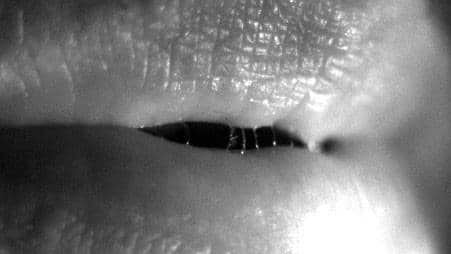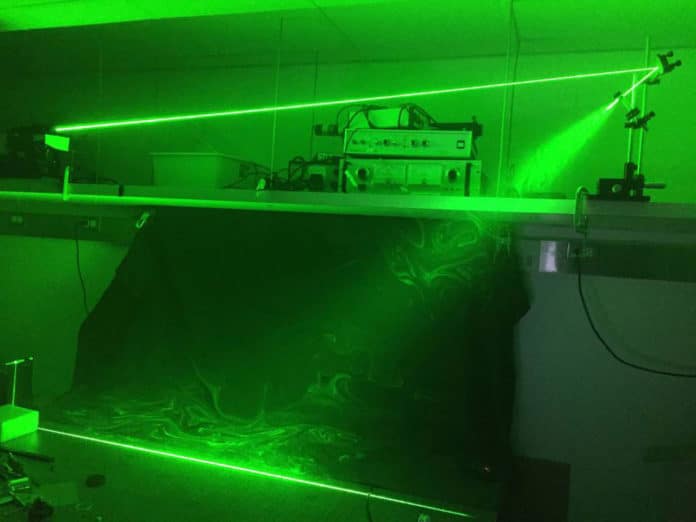For the first time, scientists from Princeton University have made direct visualization of the mechanism that produces droplets in the oral cavity during everyday speech. They used a high-speed imaging techinque to show exactly do we spread droplets as we talk.
When our mouths open to produce speech sounds, a film of lubricating saliva at first spreads over the lips. As the lips part, the liquid film then breaks into filaments. Outward airflow from the lungs stretches and thins the filaments until they eventually rupture and disperse into the air as minuscule droplets— all within fractions of a second.
A deeper understanding of this droplet formation and dispersal process should lead to new and better mitigation strategies, helping to slow down the current coronavirus pandemic along with future outbreaks.
Howard Stone, the Donald R. Dixon ’69 and Elizabeth W. Dixon Professor of Mechanical and Aerospace Engineering. “Our study provides insights into the origin of droplets when people talk, which can aid in curbing the spread of diseases like COVID-19.”

During the early weeks of the COVID-19 pandemic, scientists worldwide focused on understanding how the virus was transmitted. Similarly, scientists from this study wanted to bring their fluid mechanics expertise to bear on the problem. They focused on asymptomatic transmission: people who were not coughing and sneezing and explosively emitting pathogen-laden, airborne particles.
Stone said, “We wrote a grant proposal in April to investigate the fluid mechanics involved in asymptomatic transmission through the role of speech when people who aren’t sick are just normally interacting and talking.”
For this study, Manouk Abkarian, a research director at the French National Centre for Scientific Research (CNRS), performed most of the experiments on himself, with some additional imaging of Stone speaking. The experimental setup included Abkarian sitting in a chair in a room loaded up with fog from a fog machine.
He expressed different phonetics while talking toward a laser sheet, a flat, and a thin laser light plane. The laser sheet uncovered any particles leaving Abkarian’s mouth because of the light-scattering effect when crossing the sheet. A fast camera caught this scattering, empowering the analysts to measure droplet production levels per spoken sound.
To visualize the droplets’ formation during the speech, scientists zoomed in the camera on the speaker’s mouth. The camera was recorded at an amazingly detail-revealing 5000 frames for each second under intense illumination.
The millisecond-level perspective demonstrated the affidavit of a microscopic, lubricating, salivary layer on the lips as the lips press together before issuing a plosive consonant. The liquid layer brings into a vertical thin film as the lips separate. The film becomes unstable within a millisecond as it expands to about a millimeter in width. The film splits into numerous filaments that thin and quickly extend over centimeters in length to break finally into drops blown outward by air leaving the speaker’s mouth.
This caught-on-camera evidence contrasts with previous, mostly unsupported hypotheses regarding the formation of aerosolized droplets. Droplet formation has been presumed to occur in two ways: from thin films bursting deep in the lungs, or from airflow shearing droplets off of saliva-coated surfaces in the upper airway, which includes the throat and mouth. The jury remains out on whether those other proposed mechanisms play a role beyond the mechanism documented by Stone and Abkarian.
Abkarian said, “No one has been able to obtain direct measurements or visualizations of droplet formation in the lungs or upper airway before. Now with our study, there is compelling evidence that the stretching and breakup of saliva filaments during speech is behind the aerosol formation.”
As is near-universally recommended by public health experts and mandated in many jurisdictions, Wearing masks should effectively contain a significant portion of expelled aerosols, the researchers pointed out. Stone and Abkarian further suggested that the simple intervention of wearing lip balm should cut down on droplet formation during the speaking.
Journal Reference:
- M. Abkarian et al. Stretching and break-up of saliva filaments during speech: A route for pathogen aerosolization and its potential mitigation. DOI: 10.1103/PhysRevFluids.5.102301
